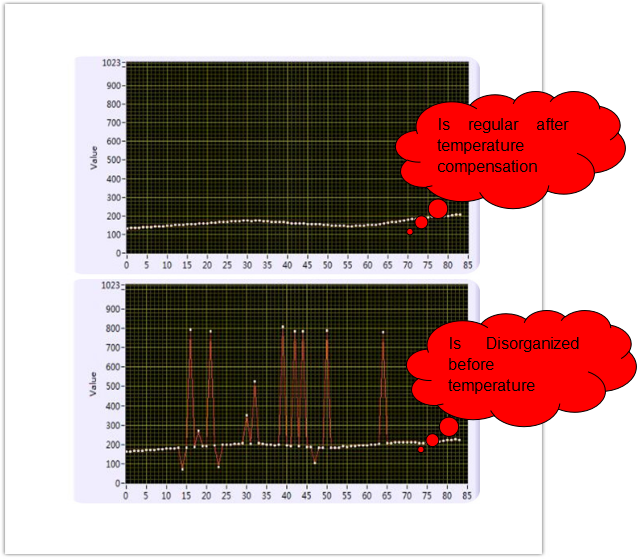What are the differences between industrial and commercial XFP transceiver?
2017-08-29
As a sales of XFP transceiver should know that the operating temperature will influence the parameters of the XFP transceiver. According to the working temperature, there are industrial and commercial XFP transceiver. What is industrial and commercial XFP transceiver? What are their differences?
1. Working temperature
Commercial XFP transceiver: 0~70℃
Industrial XFP transceiver: -40~85℃
2. Application environment
Commercial XFP transceiver: It is the most common and widely used product in the market, such as the machine room.
Industrial XFP transceiver: It is applied in a relatively harsh environment,the operating temperature difference is large. It’s basic operating condition is that it must meet the temperature requirement of - 40 ~ 85 ℃. Such as remote mountain areas, tunnels, etc..

3. Chip withstand temperature
Commercial XFP transceiver: The withstand temperature range of TO-CAN is 0~70℃.
Industrial XFP transceiver: The withstand temperature range of TO-CAN is -40~85℃.
4. Test method
Commercial XFP transceiver: Normal temperature aging, the maximum temperature is only 70 degrees, the ideal operating temperature is 0~70℃.
Industrial XFP transceiver: Need high and low temperature aging test, the maximum temperature is 85℃, the module can work steadily less than 0℃.
5. Temperature compensation software
Industrial XFP transceiver must be imported temperature compensation software, it’s function is to control the stable working current supply of the XFP transceiver. When the temperature changes,the temperature compensation software will play it’s role.
The technical engineer needs to spend much time to do the temperature compensation. Increase or decrease every 5 degrees(or 10 degrees) as a node to calculate it’s slope. They need to write into to the corresponding IC(chip) of the XFP transceiver after get the result. This work makes the technical engineer have to stay in front of the high and low temperature cycle aging box for a few hours or even longer. The increase in the raw material and the making cost, which is the cause of the high price of the industrial XFP transceiver. The compared pictures of the working current before and after temperature compensation:


XFP module,XFP transceiver,bidi sfp,SFP+ module,SFP+ transceiver Which is good? First choice Fiberland!Thanks for your concern, to learn more about Fiberland, please enter Fiberland website: http://www.fiberlandtec.com/
1. Working temperature
Commercial XFP transceiver: 0~70℃
Industrial XFP transceiver: -40~85℃
2. Application environment
Commercial XFP transceiver: It is the most common and widely used product in the market, such as the machine room.
Industrial XFP transceiver: It is applied in a relatively harsh environment,the operating temperature difference is large. It’s basic operating condition is that it must meet the temperature requirement of - 40 ~ 85 ℃. Such as remote mountain areas, tunnels, etc..

3. Chip withstand temperature
Commercial XFP transceiver: The withstand temperature range of TO-CAN is 0~70℃.
Industrial XFP transceiver: The withstand temperature range of TO-CAN is -40~85℃.
4. Test method
Commercial XFP transceiver: Normal temperature aging, the maximum temperature is only 70 degrees, the ideal operating temperature is 0~70℃.
Industrial XFP transceiver: Need high and low temperature aging test, the maximum temperature is 85℃, the module can work steadily less than 0℃.
5. Temperature compensation software
Industrial XFP transceiver must be imported temperature compensation software, it’s function is to control the stable working current supply of the XFP transceiver. When the temperature changes,the temperature compensation software will play it’s role.
The technical engineer needs to spend much time to do the temperature compensation. Increase or decrease every 5 degrees(or 10 degrees) as a node to calculate it’s slope. They need to write into to the corresponding IC(chip) of the XFP transceiver after get the result. This work makes the technical engineer have to stay in front of the high and low temperature cycle aging box for a few hours or even longer. The increase in the raw material and the making cost, which is the cause of the high price of the industrial XFP transceiver. The compared pictures of the working current before and after temperature compensation:


XFP module,XFP transceiver,bidi sfp,SFP+ module,SFP+ transceiver Which is good? First choice Fiberland!Thanks for your concern, to learn more about Fiberland, please enter Fiberland website: http://www.fiberlandtec.com/
RECENT BLOG POST
-
012019-10With the continuous development of 5G communication technology, 100G modules are gradually becoming popular. We know that there are many kinds of packages for 100G optical modules. From 2000 to now, the optical module package types have been rapidly developed. Its main package types are: GBIC, SFP, XENPAK, SNAP12, X2, XFP, SFP+, QSFP/QSFP+, CFP, CXP. In the fast-developing network era, some 100G optical modules avoid the risk of being eliminated, and upgraded and revised with the wave of the Internet, such as 100G CFP optical modules.
-
012019-101. What is the CWDM SFP? The CWDM optical module is an optical module using CWDM technology to implement the connection between the existing network device and the CWDM multiplexer/demultiplexer. When used with a CWDM multiplexer/demultiplexer, CWDM optical modules can increase network capacity by transmitting multiple data channels with separate optical wavelengths (1270 nm to 1610 nm) on the same single fiber.
-
012019-10AOC is the abbreviation of Active Optical Cables, which is called Active Optical Cables in Chinese. AOC active optical is to encapsulate two optical modules and cable together. Because the medium of transmission in the middle is optical cable, AOC optical module, which contains laser devices, has a higher price for DAC. However, its optical aperture is not exposed, it has high reliability, and its working distance can be customized for a long distance of less than 100 meters.
-
012019-10Dense Wavelength Division Multiplexing (DWDM) technology is capable of transmitting data in an optical fiber using bit wavelength parallel transmission or string line transmission using the wavelength of the laser.It is widely used in different fields of communication networks, including long-distance backbone networks, metropolitan area networks (MANs), residential access networks, and local area networks (LANs).The DWDM optical module is the optical module that uses this technology, so the DWDM optical module has high bandwidth and long-distance transmission characteristics.












